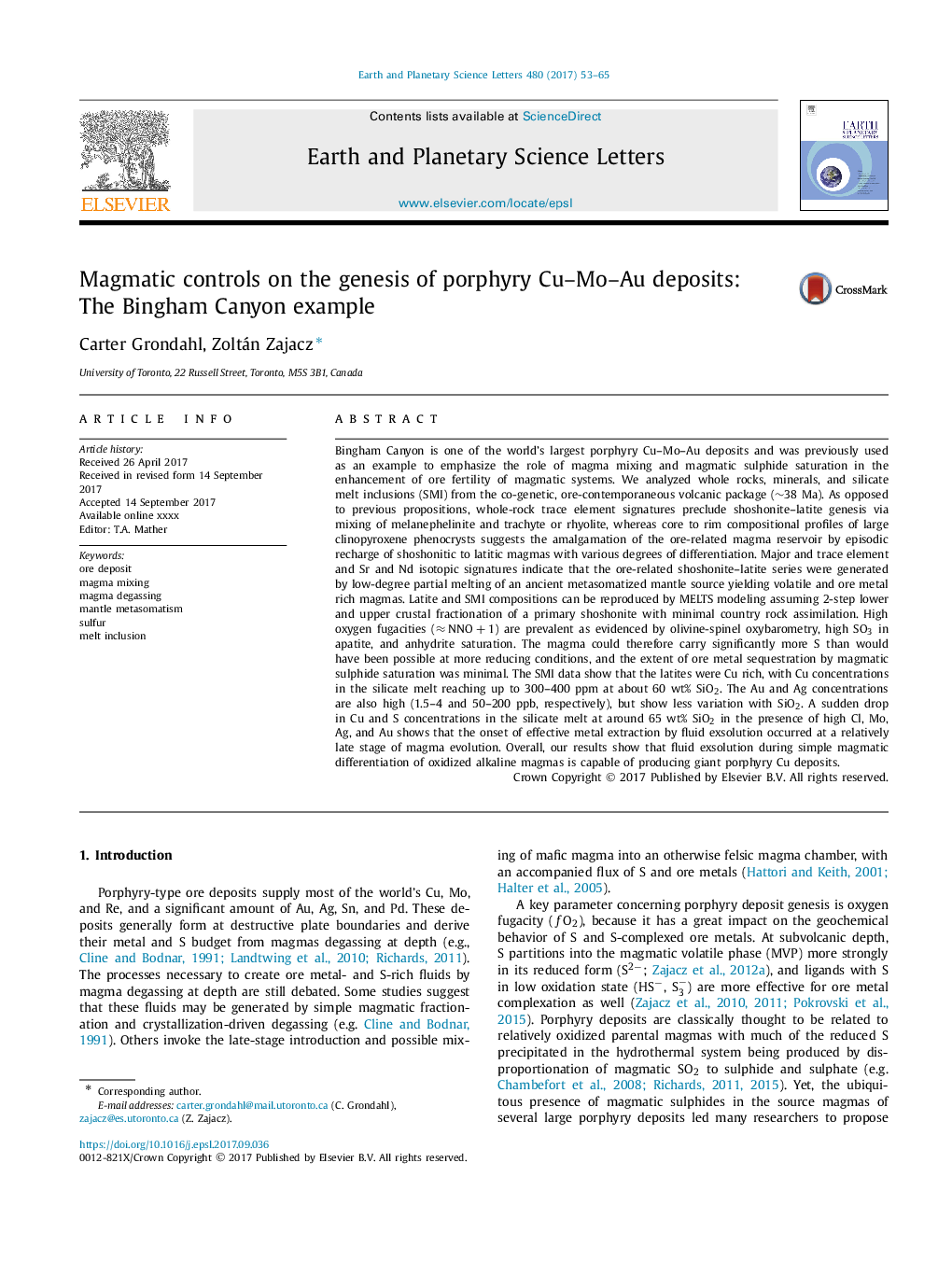| کد مقاله | کد نشریه | سال انتشار | مقاله انگلیسی | نسخه تمام متن |
|---|---|---|---|---|
| 5779486 | 1634676 | 2017 | 13 صفحه PDF | دانلود رایگان |
عنوان انگلیسی مقاله ISI
Magmatic controls on the genesis of porphyry Cu-Mo-Au deposits: The Bingham Canyon example
دانلود مقاله + سفارش ترجمه
دانلود مقاله ISI انگلیسی
رایگان برای ایرانیان
کلمات کلیدی
موضوعات مرتبط
مهندسی و علوم پایه
علوم زمین و سیارات
علوم زمین و سیاره ای (عمومی)
پیش نمایش صفحه اول مقاله

چکیده انگلیسی
Bingham Canyon is one of the world's largest porphyry Cu-Mo-Au deposits and was previously used as an example to emphasize the role of magma mixing and magmatic sulphide saturation in the enhancement of ore fertility of magmatic systems. We analyzed whole rocks, minerals, and silicate melt inclusions (SMI) from the co-genetic, ore-contemporaneous volcanic package (â¼38 Ma). As opposed to previous propositions, whole-rock trace element signatures preclude shoshonite-latite genesis via mixing of melanephelinite and trachyte or rhyolite, whereas core to rim compositional profiles of large clinopyroxene phenocrysts suggests the amalgamation of the ore-related magma reservoir by episodic recharge of shoshonitic to latitic magmas with various degrees of differentiation. Major and trace element and Sr and Nd isotopic signatures indicate that the ore-related shoshonite-latite series were generated by low-degree partial melting of an ancient metasomatized mantle source yielding volatile and ore metal rich magmas. Latite and SMI compositions can be reproduced by MELTS modeling assuming 2-step lower and upper crustal fractionation of a primary shoshonite with minimal country rock assimilation. High oxygen fugacities (âNNO+1) are prevalent as evidenced by olivine-spinel oxybarometry, high SO3 in apatite, and anhydrite saturation. The magma could therefore carry significantly more S than would have been possible at more reducing conditions, and the extent of ore metal sequestration by magmatic sulphide saturation was minimal. The SMI data show that the latites were Cu rich, with Cu concentrations in the silicate melt reaching up to 300-400 ppm at about 60 wt% SiO2. The Au and Ag concentrations are also high (1.5-4 and 50-200 ppb, respectively), but show less variation with SiO2. A sudden drop in Cu and S concentrations in the silicate melt at around 65 wt% SiO2 in the presence of high Cl, Mo, Ag, and Au shows that the onset of effective metal extraction by fluid exsolution occurred at a relatively late stage of magma evolution. Overall, our results show that fluid exsolution during simple magmatic differentiation of oxidized alkaline magmas is capable of producing giant porphyry Cu deposits.
ناشر
Database: Elsevier - ScienceDirect (ساینس دایرکت)
Journal: Earth and Planetary Science Letters - Volume 480, 5 December 2017, Pages 53-65
Journal: Earth and Planetary Science Letters - Volume 480, 5 December 2017, Pages 53-65
نویسندگان
Carter Grondahl, Zoltán Zajacz,